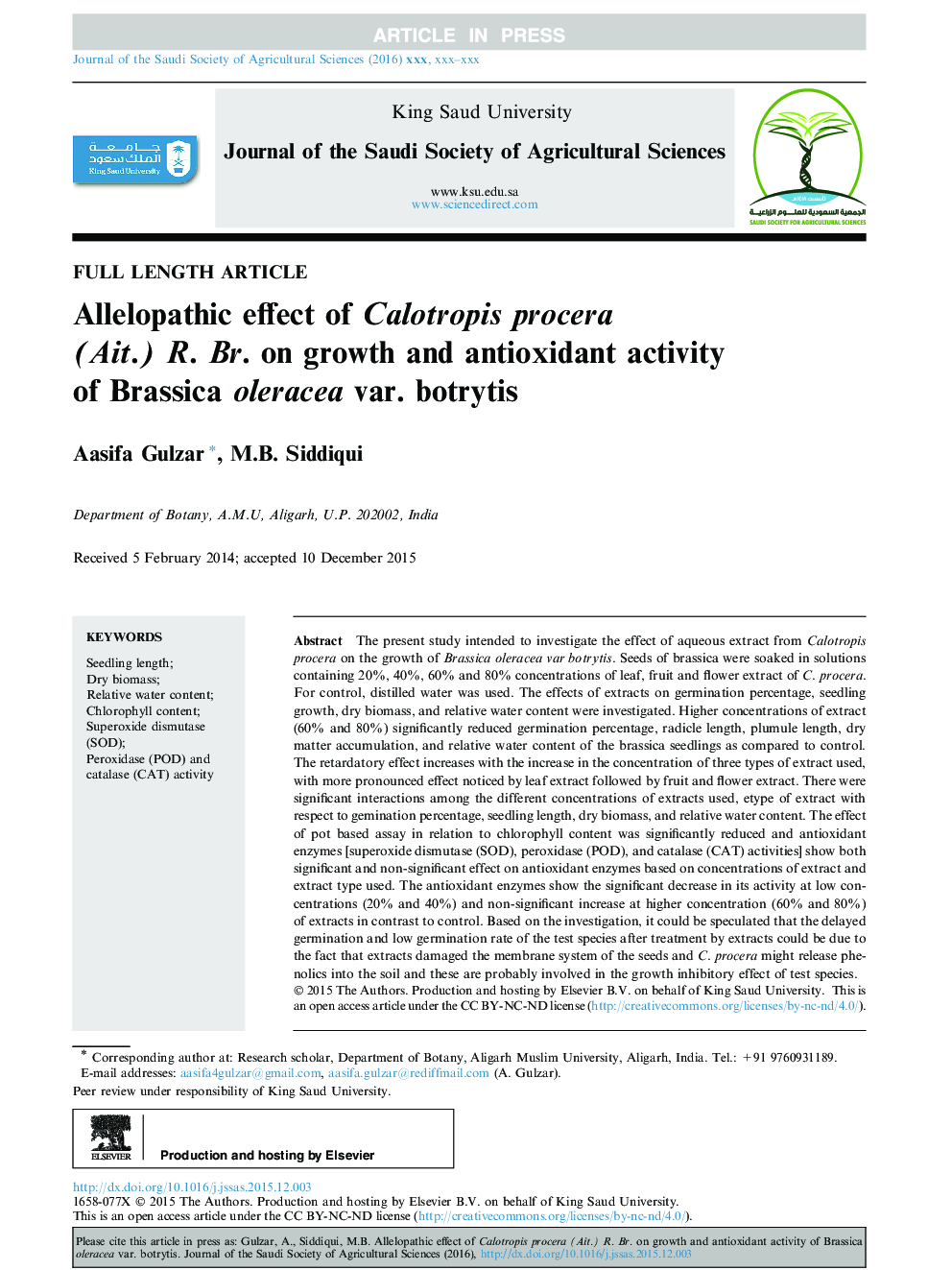| Article ID | Journal | Published Year | Pages | File Type |
|---|---|---|---|---|
| 8876369 | Journal of the Saudi Society of Agricultural Sciences | 2017 | 8 Pages |
Abstract
The present study intended to investigate the effect of aqueous extract from Calotropis procera on the growth of Brassica oleracea var botrytis. Seeds of brassica were soaked in solutions containing 20%, 40%, 60% and 80% concentrations of leaf, fruit and flower extract of C. procera. For control, distilled water was used. The effects of extracts on germination percentage, seedling growth, dry biomass, and relative water content were investigated. Higher concentrations of extract (60% and 80%) significantly reduced germination percentage, radicle length, plumule length, dry matter accumulation, and relative water content of the brassica seedlings as compared to control. The retardatory effect increases with the increase in the concentration of three types of extract used, with more pronounced effect noticed by leaf extract followed by fruit and flower extract. There were significant interactions among the different concentrations of extracts used, etype of extract with respect to gemination percentage, seedling length, dry biomass, and relative water content. The effect of pot based assay in relation to chlorophyll content was significantly reduced and antioxidant enzymes [superoxide dismutase (SOD), peroxidase (POD), and catalase (CAT) activities] show both significant and non-significant effect on antioxidant enzymes based on concentrations of extract and extract type used. The antioxidant enzymes show the significant decrease in its activity at low concentrations (20% and 40%) and non-significant increase at higher concentration (60% and 80%) of extracts in contrast to control. Based on the investigation, it could be speculated that the delayed germination and low germination rate of the test species after treatment by extracts could be due to the fact that extracts damaged the membrane system of the seeds and C. procera might release phenolics into the soil and these are probably involved in the growth inhibitory effect of test species.
Related Topics
Life Sciences
Agricultural and Biological Sciences
Agricultural and Biological Sciences (General)
Authors
Aasifa Gulzar, M.B. Siddiqui,
